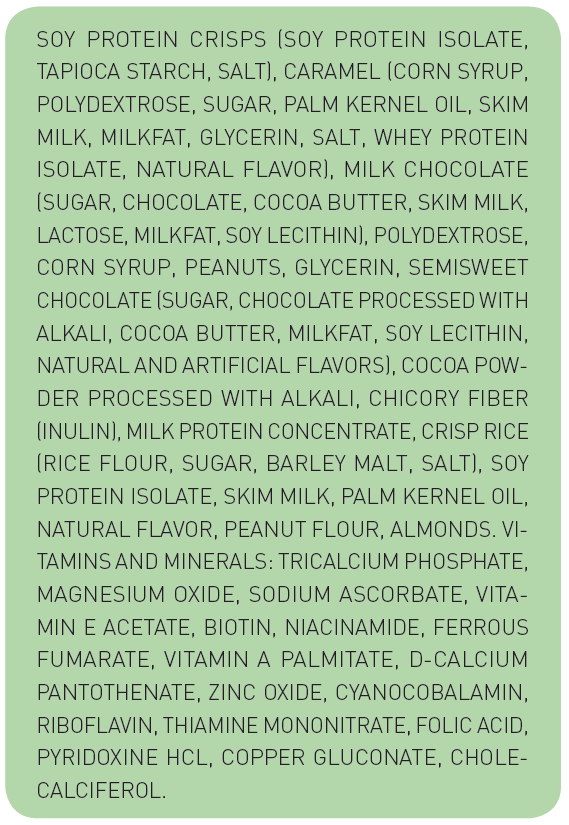By Candace Chemtob, B.S. and M.S. in Human Nutrition
The original energy bar was created for astronauts in the 1960s. Eating in space at zero gravity pro- vided a challenge to the early space program. With the help of food scientists at NASA and the Pills- bury Company, “Space Food Sticks” were invented and promoted as a “balanced energy snack in a rod form”. Energy bars have evolved from this early version to granola bars that gained popularity during the “health food” movement in the 1970s and eventually to today’s energy bars. With hundreds of energy bars to choose from, in this article I will try to help you find the product that best meets your needs.
Not all energy bars are created equal. Read the nutrition labels and pick a bar that best suits your needs. Energy bars can be roughly classified as:
- Meal replacement bars: Useful if your calorie and protein needs are high, as with competitive and/or junior squash players. 300 to 350 calories with 8 to 20g per bar.
- Protein bars: If your protein intake is low, these bars will help boost your dietary protein intake. 200 to 300 calories with 10 to 30g protein.
- Organic bars: For those concerned with eating an organic diet, there are many choices available. 180 to 300 calories with 8 to 15g protein.
- Snack size bars: Perfect if you are trying to limit your caloric intake. 100 to 130 calories with 3 to 10g protein.
Energy bars are convenient. Energy bars come in single-serving sizes, do not have to be refrigerated, and can be found in nearly every grocery and convenience store in the U.S. The packaging is sturdy and they can survive in the bottom of a squash bag. For the squash player, energy bars can be a good source of calories, carbohydrates, and protein when regular, whole food is not available. Be sure to pack energy bars when traveling, as availability and palatability of tournament food is not a sure bet. If you are an elite player traveling abroad, stock up on energy bars as they have not gained acceptance around the world and will be difficult, if not impossible, to find outside of the U.S.
Energy bars can taste good. With so many bars on the market, you are sure to find one that you find appetizing. Remember, food should taste good.
Portion controlled snack. Energy bars come in single servings. If you are watching your weight, there is an advantage to knowing and controlling the size and caloric content of your snack.
Energy bars are often high in calories, as the name indicates. As you may remember from previous articles, the energy in food is measured in calories. Energy bars are “dense” in calories, meaning that in a small volume, you will be able to consume a high number of calories. If you are using energy bars as a meal replacement, or to replenish after a hard match, this is good.
Some energy bars are glorified candy bars. This is something that we probably all know instinctually but are hoping that those great tasting bars are more than glorified candy bars. Be aware of the sugar content of energy bars. For example, a “Pro Bar Superfood Slam” has more calories and carbohydrates than a Milky Way candy bar. Read your labels carefully and don’t be fooled!
Most energy bars are not high in protein. Most energy bars contain 8 to 10g of protein. This is the amount of protein in a little more than one ounce of meat or a glass of milk. To consider an energy bar high in protein, it would contain more than 15 to 20g of protein. This is, however, a small amount of protein compared to a turkey (3 oz) sandwich with a glass of milk (8 oz) which contains 32 to 34g protein.
Make an informed decision. Making an informed decision to find a “healthy” energy bar, goes beyond the nutrition label. Take a close look at the ingredient list. To make my point, here is the ingredient list of a Snickers Marathon Energy Bar:

It would be difficult to dispute that this is a processed food. The list of ingredients include plenty of sugars called by other names such as corn syrup, polydextrose, and lactose. These bars also contain Palm Kernel Oil which is a saturated fat.


